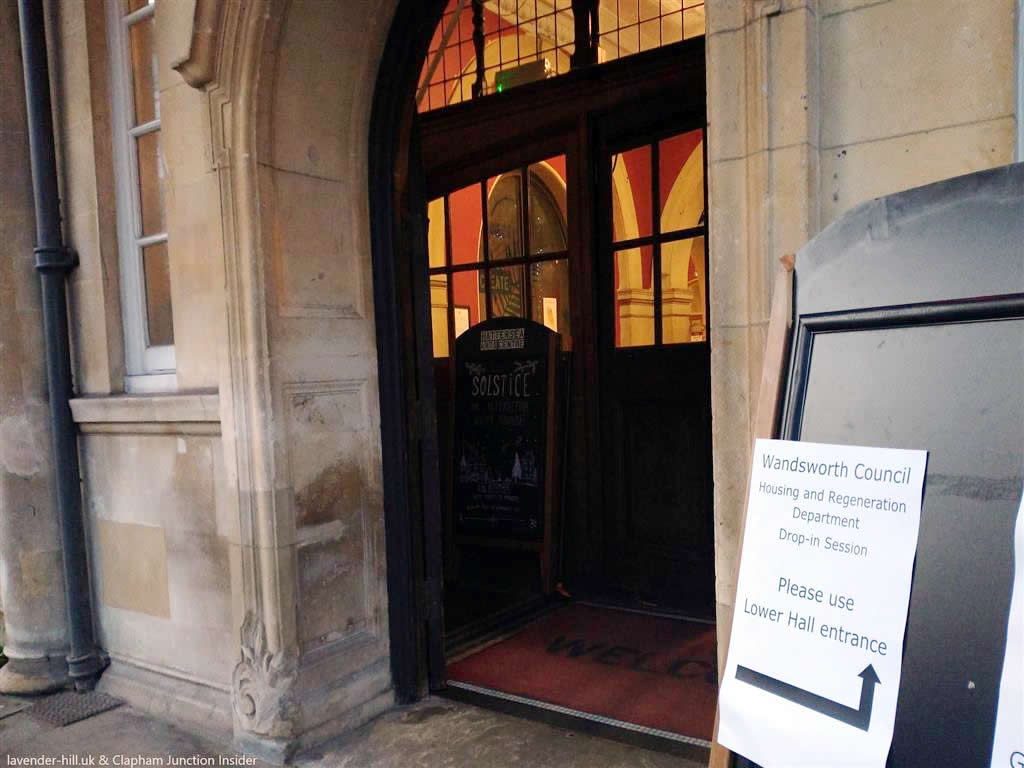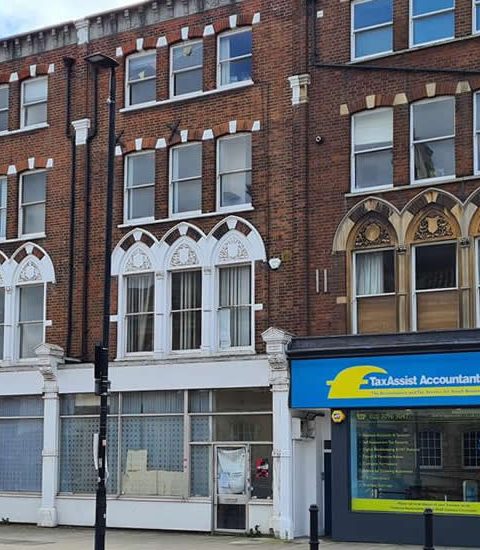Last Wednesday, 6th December, the Council organised a public meeting, chaired by councillor Aydin Dikerdem, Wandsworth Cabinet’s lead for Housing, at Battersea Arts Centre, from 4-7 pm. Following more than a month of very controversial feedback on the Rough Sleeper Hub proposed in Lavender Hill, it was an opportunity for the Council to exchange and explain to the public what they intended to achieve.
The meeting saw around 100 people attend in total, coming and leaving over the 3 hours of the event, including some who supported the idea in general but had quite specific asks on the proposal and suggestions for how the impact on the neighbours could be reduced, those who had a more general fear about impacts and how they could be handled, and those who did not want this to go ahead under any circumstances.
Hadas Hagos, who founded the local charity Waste Not Want Not (WNWN), said:
“In the first instance, when I attended the meeting to support the scheme, I was enthusiastic about the possibility of aiding homeless individuals and was eager to contribute.
However, upon attending the meeting, I observed fear, misinformation, and a lack of trust among residents due to insufficient information. The fear stemmed from potential negative impacts on our communities. The transparency of the actual plan was crucial, and I firmly support the project but emphasise the importance of effective communication and consultation by the Council”.
A fear that Aydin Dikerdem seemed to comprehend, as he told us before the meeting:
“I completely understand why people were concerned or worried about the plans when they first heard about them. We’re holding the public drop-in session so we can reassure residents and field any questions they might have about the proposals but I also welcome people emailing me directly. We are very confident this will be a discreet and incredibly safe service. We want to improve things for the local area by helping people rough sleeping get back on their feet, and as a local resident myself it is very personal to me that this does not negatively impact anybody who lives off and around Lavender Hill.”
Besides Aydin, the meeting included a mix of Council staff, primarily from the housing department and the existing team responsible for managing the Council’s services for rough sleepers. While some public meeting (including those organised by the Clapham Junction Action Group in the past, here and there) are structured with a panel addressing and responding to an audience, the event was organised with round table where it was possible to engage with the Council representatives.
The general mood was fairly constructive, with Council officers taking note of the concerns and suggestions presented. As the Cabinet member for housing and consequently accountable for the proposal, Aydin Dikerdem unsurprisingly attracted the largest crowd and encountered the most vocal critics. Other groups engaged in more technical discussions with officers regarding housing approaches and project development.
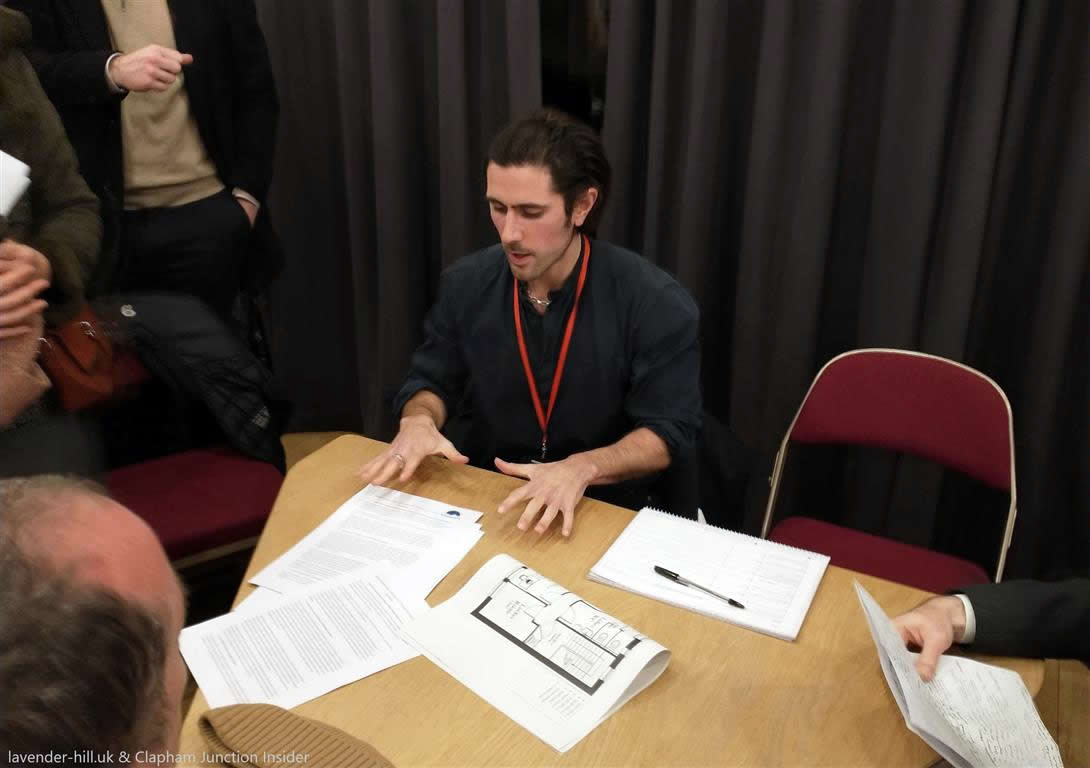
Nevertheless, on whether this reassured attendees, the underlying questions remain regarding why the provision for the entirety of Richmond and Wandsworth is being concentrated here. Additionally, there are concerns about managing the challenges of accommodating residents with complex needs in a less-than-ideal location that is already populated with children and facing its own unique set of challenges.
The meeting might have fallen short in providing adequate reassurance on these points. Despite the Council’s convoluted explanations, the main reason for this decision appears to be the availability of a Council building, which is probably the only suitable location situated on a main street.
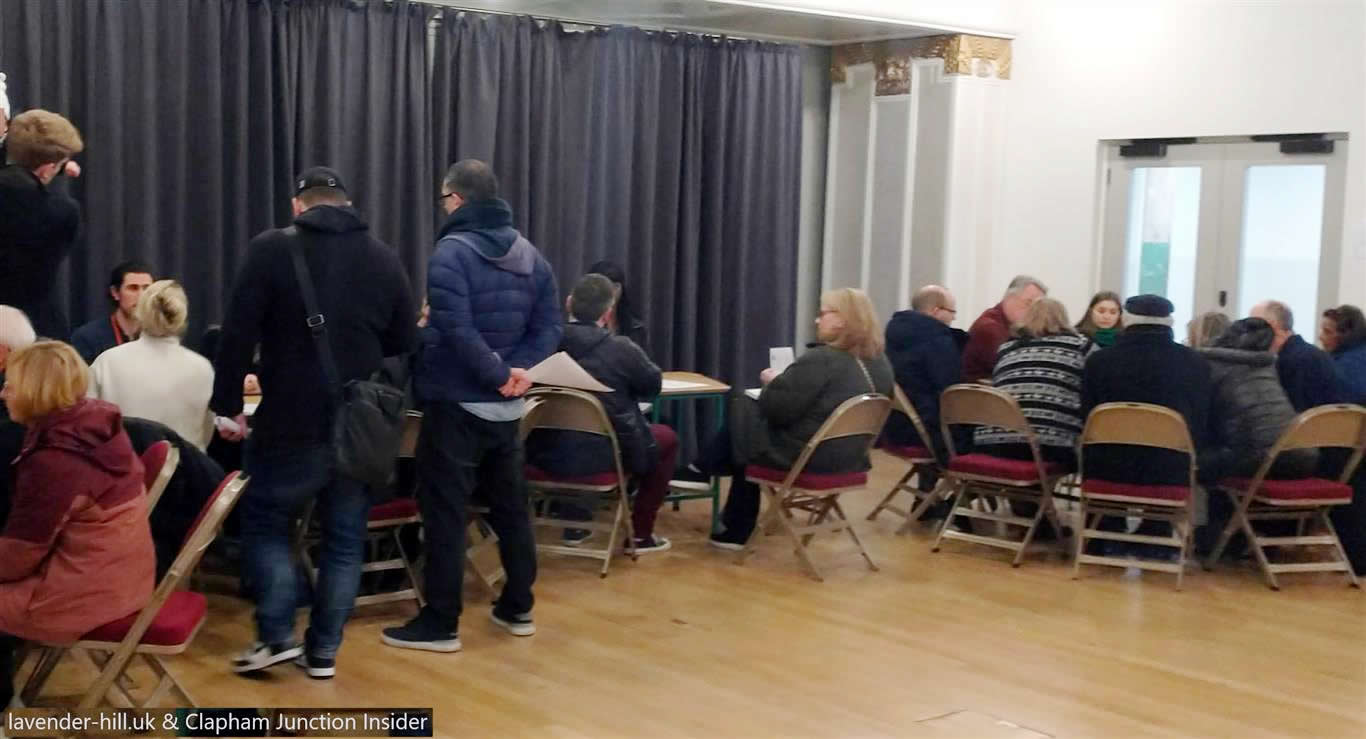
Emotions ran high at times. One attendee shared deeply personal concerns about individuals similar to the target demographic of the proposed facility displaying aggressive behavior toward both adults and young children in the area. There was apprehension that housing such individuals nearby could exacerbate the issue.
Some progress made on the issues raised during the meeting
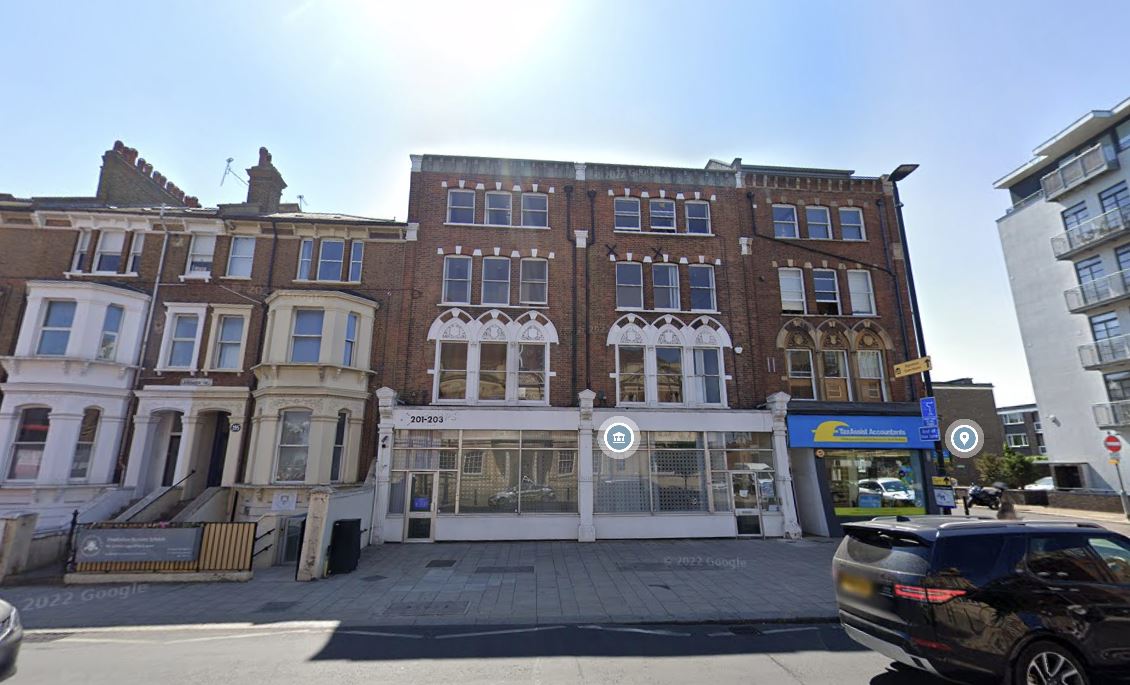
The Council’s proposed plan focuses on internal redevelopment and a change of use for a Hub capable of accommodating up to 11 residents. The three-story structure includes a ground floor featuring a reception area, staff offices, meeting room, tea/coffee counter, and kitchen. The first and second floors will offer nine private rooms resembling hostel bedrooms, along with shared facilities and the potential to add two more beds. The third floor will exclusively house offices with secure access.
The Hub will have full-time staff including a Manager, Deputy Manager, and night duty staff, providing 24/7 coverage with CCTV surveillance. Services will include Rough Sleeper Housing Assessment Officers, Homeless Healthlink workers, Drug and Alcohol Homeless pathway, and Outreach teams, with various partner agencies offering services by appointment.
- Read our article with a presentation of the scheme: A rough sleeper hub is proposed in front of the Battersea Art Centre
While the project did not start in the best way, the Council is now working on resolving issues which includes engaging with surrounding businesses, including especially the nursery next door, communicating with the police and the local community.
A four page Q&A was handed out covering some of the most frequently raised questions and concerns, which we’ve reproduced at the end of this post.
In our previous article, we listed 12 recommendations that we thought are needed to make the scheme work. The website lavender-hill.uk has made a detailed analysis for each of the twelve points, therefore we will highlight here the way the Council has addressed the concerns and some responses (or lack of response sometime).
The impact on the nearby nursery was a major concern for everyone, particularly the parents present at the meeting. The fact that the nursery was initially unaware of the plans was deeply regrettable.
However, it seems that there has been a reconsideration of the plans following the raised concerns. The first and most important change probably is probably regarding the type of shelter offered. The accommodation is now planned for medium-term stays rather than being a nightly hostel, with the target stay length set at 28 days, subject to variation based on individual progress and needs. Some attendees said that they would like to see new plans as there are currently 2 fold-up beds for outreach accommodation, which does not fit with the commitment to have only medium-term stays.
The meeting provided significant details about the housing arrangements and it was confirmed that the rooms won’t operate as drop-in shelters; they’ll be allocated to people referred by the Council’s outreach service, strictly on an appointment-only basis. Concerns were raised about what happens when all rooms are occupied; the Council intends to continue accommodating extra individuals in nearby hotels or other locations (which is often in Croydon and Surrey – and where the Council is increasingly being outbid for the supply of accommodation by the Home Office!).
In term of security, they confirmed that there will be 24 hour double cover security on site, and they will also have patrol duties around the site as a whole to ensure there is no loitering (some more details are in the Q&A below). The alleyway at the back of the hostel (opening on to Mysore Road) will have a gate fitted.
Officers assured that the rear bedrooms will have fully frosted glass to prevent any overlooking and they will have limited opening capabilities. In addition, resident access to the rear yard will be completely restricted, with alarmed fire doors accessible only to staff. At the front of the hostel, CCTV will be installed, and the security service will be tasked with preventing any loitering.
But concerns were expressed by some attendees about the impact on dark, less monitored streets near the Battersea Arts Centre, already facing issues with drug sales and petty crime.
The Council’s answer was not very clear and that should be addressed further. There are already some positive ideas that came out of the meeting.
The idea of a dedicated community engagement lead in the facility was expressed during the public meeting and the Council responded with enthusiasm that they will take that into consideration for a refinement of the proposal.
Aydin said:
“One of the best ideas that came out of the meeting was that if the planning application succeeds, we have a local residents liaison group to monitor how things go and have regular meetings with staff to feedback and make sure everything is going smoothly.”
There seems to be a clear commitment to have a contact line that would be staffed on a full time basis from within the facility.
This meeting was a first step in the right direction for many attendees. The Council said that they are now liaising with the police (when we contacted them previously, the police told us that they were not aware “at all” of any plan). They are also planning to send out a detailed letter to local residents answering some of the most common questions that have come up, especially for those unable to make the meeting.
You can get more information with the community website Lavender-Hill.uk which is working with us on the story and we will aim to keep you posted if we hear further updates.
FAQ produced by Wandsworth Council:
Rough Sleeper Hub – Lavender Hill – Frequently Asked Questions
Why is the Council planning to open a Rough Sleeper Assessment Hub in Wandsworth?
There is currently no local provision to bring rough sleepers off the streets. Rough sleepers in Wandsworth are currently placed in expensive temporary accommodation far from the borough and without access to locally provided support services. Efforts to bring people off the streets are significantly hampered by this lack of provision.
A 2021 report by Shelter showed that 1 in 54 residents in Wandsworth presented as homeless and so this is a much-needed service to address this pressing issue.
Through working with the Government’s Department of Levelling Up Homes and Communities (DLUHC) and researching what works well in other boroughs that deliver the best outcomes for rough sleepers, we have identified that there is an urgent need for an offer that brings together the range of specialist services providing support , assessments, and advice. A local Hub with the facility for the co-location of key services with some short stay assessment accommodation was proposed to meet this gap and was strongly supported by the Government, who have allocated funding for this building.
Why has the Council chosen this building/ location?
201-203 Lavender Hill was previously occupied by the Council’s Leaving Care Service and has been empty since October 2022. In terms of location, similarly to other projects we have visited that work well in other boroughs, the building is on a busy main road as opposed to a quieter residential street, meaning there is very limited impact on residents. This site is also only one minute away from one of London’s few remaining 24/7 police stations with an open front desk, providing an added level of public security. The beds available at the Hub will reduce the need to place service users into temporary accommodation, which can be isolating and put individuals at risk of not being able to receive the level of support they need. In addition, having key specialist and support services on site will encourage connection and engagement with services.
People who are experiencing rough sleeping often depend on local support systems and therefore offers of accommodation that may be in faraway or unknown areas may not be accepted or are unlikely to be occupied, risking a return to rough sleeping. The proximity of the building to Clapham Junction, the borough’s busiest rough sleeping hotspot, is also a positive as it maximises the likelihood of offers of accommodation being accepted, consequently increasing the chances of the Council and partner agencies reducing rough sleeping in Wandsworth.
The building consists of two properties which have been knocked through, and the layout of rooms lends itself well to a mix of short stay bedrooms and office space necessary for an assessment hub. The building has a secure reception area which was in place for the previous occupier and access to areas within the building will be controlled by staff on site and CCTV.
How will the Hub be managed/ staffed?
The Council will have a set of standard operating procedures to support the efficient and effective management of the Assessment Hub, including an admissions policy for new residents. During weekdays the Hub will be staffed by specialist rough sleeper workers from 07:30 to 19:30 Monday to Friday, and at all other times (i.e. evenings, nights and weekends) the Hub will be staffed by a minimum of two suitably trained members of staff, with management on-call at all times. There will also be a 24/7 ‘hotline’ for local residents and business owners to use to report any issues or concerns.
The Hub ‘rules and expectations’ document that new residents will have to agree to and sign before being offered a bedroom at the Hub will clearly set out a zero-tolerance approach to drug use on site. This will be enforced by Hub staff on site 24/7. Where these rules are not followed, the Hub Manager and Deputy Manager will follow the Hub Eviction Termination Procedure. Having visited other similar schemes elsewhere in London, a successful approach taken which we will look to implement at the Hub involves exclusion orders (e.g. for a certain period of hours) on residents not adhering to rules before permanent eviction orders are issued.
How will the immediate area surrounding the Hub be managed, namely the wide concrete path in front of the Hub and rear garden alleyway entrance?
CCTV monitoring will be in place with cameras inside and positioned around the exterior of the Hub The cameras will be monitored 24/7 by the Hub duty team. This team will also be responsible for ensuring there is no loitering outside the Hub and noise is kept to a minimum to ensure residents are not disturbed, especially late at night. On duty staff will complete an incident logbook and report any incidents to the Hub Manager and Deputy Manager. The Hub rules document that residents must sign also covers behaviour in the immediate area surrounding the Hub, the Hub Manager and Deputy Manager will follow the Hub’s eviction procedure where these rules are not followed by issuing exclusion and eviction orders where necessary.
Will the Council be accommodating ‘high risk’ individuals at the Hub?
No. The Hub requires residents to share communal space, kitchen and bathroom facilities. The Council and its partner agencies have a strong understanding of the risk factors that need to be considered when providing shared accommodation to service users, either on a long term or short term basis. Therefore, any service users who would be at risk of having a detrimental impact on the balance of the community, safety, or security of staff and other residents at the Hub will not be considered for Hub based accommodation. In these instances, the Council will continue to offer alternative self-contained temporary accommodation in the same way it currently does.
How will the Hub be used during the day-time?
The Hub is not a day centre for people experiencing rough sleeping, service users will be invited to attend services on an appointment basis only. The co-located partner agencies will offer appointments to service users where they will be seen either in the ground floor meeting booths or the ground floor clinical room for health interventions or private appointments. The 1st floor communal space may also be used to provide workshops such as tenancy training to residents. Appointments will be only arranged during office hours. The only access to the building outside office hours will be the short stay residents and this will be managed by staff who will be on-site 24/7.
How can I report any issues to the Hub staff/ management?
There will be a 24/7 hotline number that will be provided to local residents and business owners. The Hub duty team can be contacted on this number to raise any issues, worries or concerns at any time day or night.
How many rough sleepers will be provided with bedroom accommodation at any one time?
There will be 9 rooms in the Hub. In some instances, it may be necessary and appropriate to provide accommodation at the Hub to couples who are rough sleeping, meaning that occasionally there may be 10 or 11 people accommodated if one or two couples happen to be at the Hub at any one time.
How will residents be booked into rooms at the Hub? Will this be by appointment or at night?
Service users will be booked in on an appointment basis by the Housing team. Bookings will be arranged during the day.
Although the Hub will be staffed 24/7, new admissions into the 9 available rooms will normally take place during daytime office hours following an assessment of housing and support needs and risk assessment by the Housing duty team. New residents will be required to sign a range of agreements covering engagement requirements, Hub rules and expectations and disclosure agreements for partner agencies to share information and work collectively to support the individuals.
The Hub’s focus will be to achieve rapid throughput via successful long term rehousings. When the Hub is full, the Housing duty team can explore alternative short term housing options off the street such as temporary accommodation.
During periods of severe weather (e.g. when temperatures drop below zero), the Severe Weather Emergency Protocol will be activated and Councils across the country have a statutory duty to provide safe and warm spaces at night for people who are experiencing rough sleeping. It is common for people who have experienced rough sleeping, especially over a long period of time, to have physical health needs which can put them at serious risk of harm during periods of cold weather and in some cases this can lead to fatalities if people are not protected. The Hub may be used in this regard to protect a limited number of rough sleepers from serious danger and the depredations/ impact of extreme cold weather.
What is the expected length of stay for service users accommodated at the Hub?
The principle behind the Hub is based on a short stay assessment model, replicating the approach taken by similar schemes in London, with a target of 28 days stay before move-on. However, the anticipated stay will vary between residents depending on two main factors: firstly, the complexity of a service user’s support needs, where more time may be required to facilitate engagement with various support agencies; and secondly, the rehousing pathway identified for the service user, which may depend on units in various schemes becoming vacant/ properties sourced in the private rented sector.
How will the Hub residents be supported whilst they are at the Hub?
Each resident at the service will have an allocated Housing officer responsible for exploring suitable move on options and a SPEAR worker responsible for welfare and linking in with partner agencies co-located at the Hub such as mental health and drug and alcohol teams. Hub staff will take a person-centred approach which will place the service user at the centre of decisions around engagement and rehousing.
The Council is working with partner agencies and the voluntary sector to explore food options for residents at the Hub. Hub residents will also have access to a kitchen and communal space where they can spend time outside of their rooms although these facilities will be closed to residents late at night.
Is it likely the Hub will lead to an increase in crime locally?
No. One of the overall aims of the Hub is to reduce not only rough sleeping in Wandsworth but also behaviours sometimes associated with rough sleepers such as shoplifting, ASB and burglary. Although weight is often unfairly attributed to rough sleepers for such criminal activity, it is in some cases, nonetheless, a consequence of underlying behaviours linked with people in poverty and substance misuse/ mental health issues. This is perhaps an oversimplification of the systemic issues surrounding rough sleeping, but the Hub aims to provide services which will seek to reduce the need for those experiencing rough sleeping to engage in criminal activity by supplying food, clothes and transport costs as well as taking an outcome focused person-centred approach to engagement.


